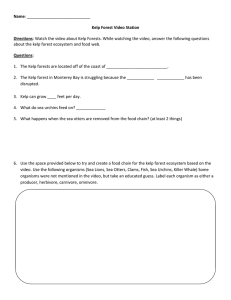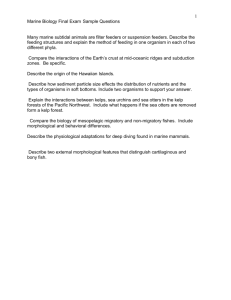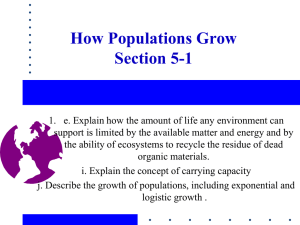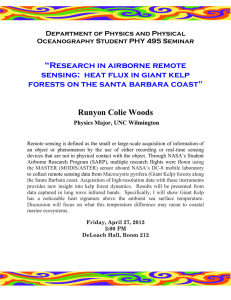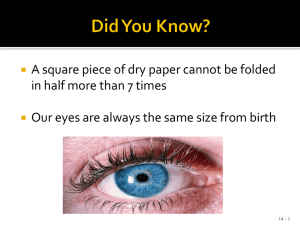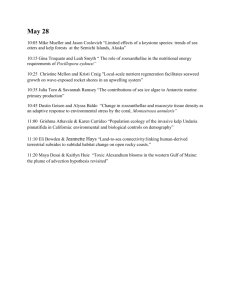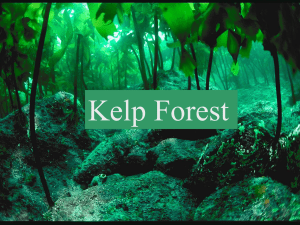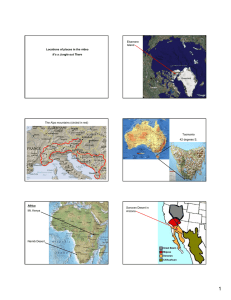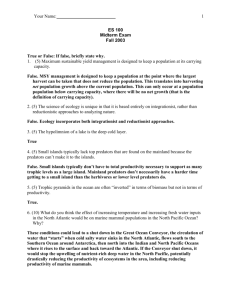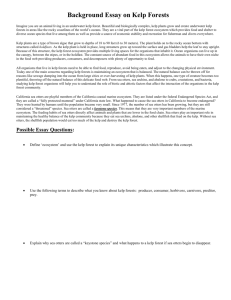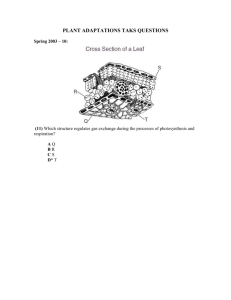Kelp Forest Ecology Marine Habitats • Estuaries • Sea Grass
advertisement
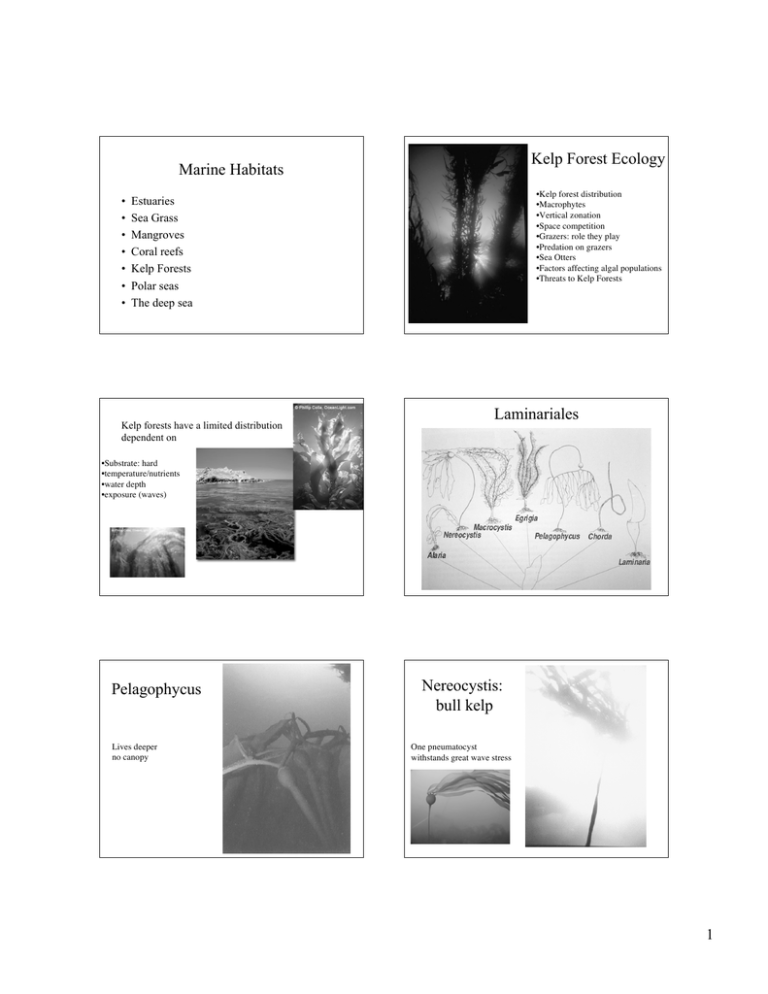
Kelp Forest Ecology Marine Habitats • • • • • • • •Kelp forest distribution •Macrophytes •Vertical zonation •Space competition •Grazers: role they play •Predation on grazers •Sea Otters •Factors affecting algal populations •Threats to Kelp Forests Estuaries Sea Grass Mangroves Coral reefs Kelp Forests Polar seas The deep sea Kelp forests have a limited distribution dependent on Laminariales •Substrate: hard •temperature/nutrients •water depth •exposure (waves) Pelagophycus Lives deeper no canopy Nereocystis: bull kelp One pneumatocyst withstands great wave stress 1 Macrocystis Vertical zonation: understory •Major canopy former •Zonation in a kelp forest •Grows from a meristem •Perennial Vertical Structure: turf Grazers: Mitra Space competition Grazers: Calliostoma 2 Grazers: urchins Predators: Kelletia Key grazers •Urchins •Abalone •Tegula •other molluscs •?? Key predators •Sea Otters •Molluscs •Rockfish •?? Grazers: tegula (snails) Predators: Sea Otters Sea Otters and Sea Urchins: a kelp forest paradigm Sea Urchins eat kelp, especially new recruits If kept in check, they eat drift kelp If populations expand, they will eat established kelp Sea Otters eat urchins, especially exposed ones They will keep sea urchin populations in check The Aleutian Island studies Sea Otters as a keystone predator 3 Threats to kelp Forests: Other factors affecting kelp forests (algal populations) Kelp Harvesting Waves/storms Harvesting? Nearshore fishing •To 3 feet underwater •Fish and Game regulated •‘self regulation’ •Seasons •Effects on kelp plant and kelp forest ecology Rockfish play an important ecological role in Kelp Forests •Live fish fishery •Long linelining •Power-plants: warm water effluent, water intake: point source pollution •Sewage: high nutrients •Agricultural runoff (non-point source pollution) •Construction •Sedimentation/scour 4
